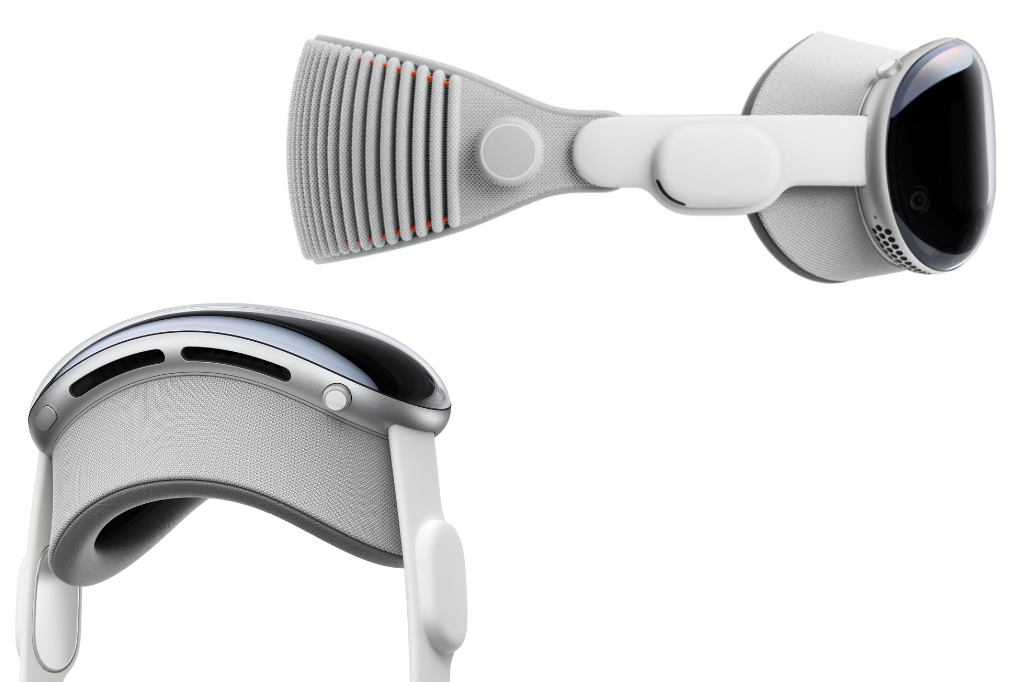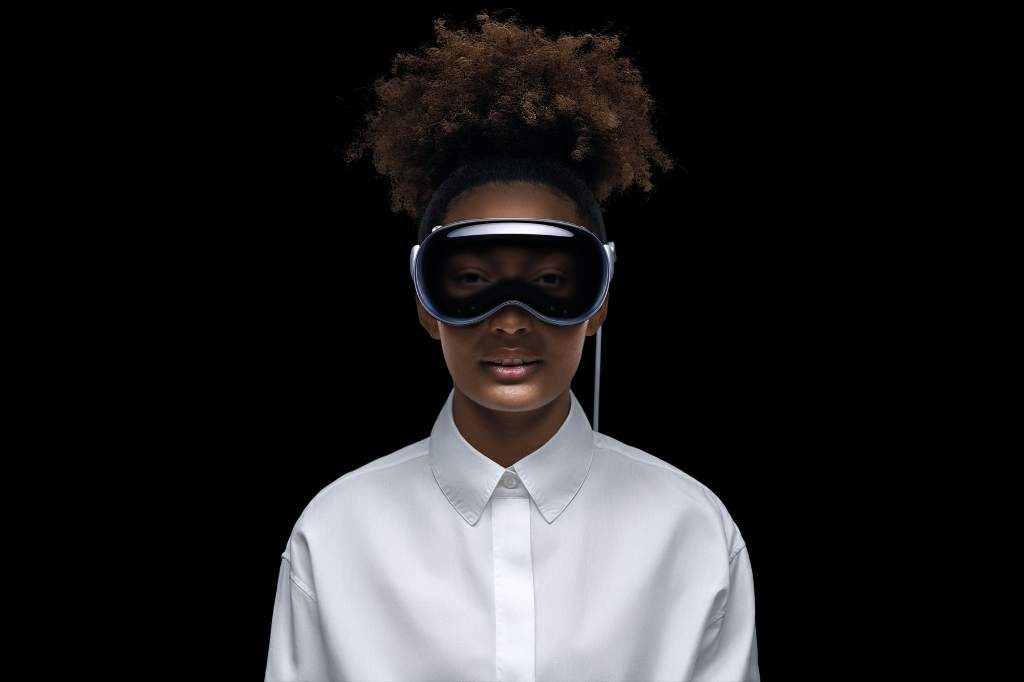Sponsored content
Sponsored by VR Vision
The recent introduction of Apple’s Vision Pro has ignited a fresh wave of excitement in the extended reality landscape, with industry experts and enthusiasts alike anticipating a surge in the growth and evolution of the XR industry.
This immersive technology (coined “spatial computing” by Apple), which encompasses virtual reality, augmented reality, and mixed reality, is set to experience a significant boost from Apple’s entry into the field.
A New Era in Immersive Technology
The Vision Pro’s unveiling at Apple’s Worldwide Developer Conference (WWDC) generated a buzz in the XR world. It has triggered both commendations and criticisms from the global XR community, with its future potential and implications for the broader XR landscape hotly debated.
Apple’s Vision Pro is a spatial computer that seamlessly blends digital content with the physical world, marking a significant step forward in immersive technology.

According to the company, it uses a “fully three-dimensional user interface controlled by the most natural and intuitive inputs possible – a user’s eyes, hands, and voice.” This marks a departure from traditional interaction methods, offering a more immersive experience for users.
A panel of global executives from the immersive tech industry weighed in on the device, discussing its potential use cases, and how it would impact the global XR community. The consensus was that the Vision Pro represented a significant leap forward in the development of XR technology, setting the stage for exciting advancements in the field.
The Potential of the Vision Pro
The Vision Pro’s introduction has been described as one of the “watershed moments” for the VR and AR industry. The device with enormous potential is poised to breathe new life into the XR space, with two of the world’s largest tech giants, Apple and Meta Platforms (formerly Facebook), now vying for market share.
The Vision Pro’s announcement has spurred conversations and expectations that “spatial computing” will become an integral part of everyday life, much like how other Apple devices have seamlessly integrated into our daily personal and professional lives.
Apple has a remarkable track record of introducing technology that resonates with individuals on a personal level. The company’s knack for creating products that enhance individuals’ lives, work, and well-being has been a crucial factor in their widespread adoption.
Vision Pro: Design and Features
The Vision Pro comes with a clean, sleek design, and high-quality features – a standard we’ve come to expect from Apple. The device is controlled using our hands, rather than external controllers, making it more intuitive and user-friendly.
Apple has prioritized its use cases within its existing ecosystem of apps and content. This strategic move sets Vision Pro apart from its competitors, providing a unique selling proposition.
The device’s hardware is impressive, but its real strength lies in the software experience it offers. Vision Pro introduces a new dimension to personal computing by transforming how users interact with their favorite apps, enhancing productivity and entertainment experiences.
The Impact on the XR Market
The Vision Pro’s introduction has the potential to reshape the XR market. Apple’s entry into the XR space is expected to boost confidence, incite competition, and accelerate advancements in other headsets. This would lead to more people using mixed reality headsets in their day-to-day lives, accelerating use cases for enterprises and industries.
On the other hand, the device’s high price point suggests that it will initially find more success among corporate entities and developers. Companies could use the Vision Pro to create immersive experiences at events, while developers could use it to build innovative apps and content for the device.
At VR Vision, for example, we see enormous potential in the application of virtual reality training for enterprise applications, and the Vision Pro will only enable further innovation in that sector.
It is much safer and cost-effective to operate heavy machinery in the virtual world than in the real world for training. This has applicability across a wide array of industries and use cases and it will be interesting to see just how impactful it truly becomes.
The Vision Pro’s Presentation
Apple’s presentation of the Vision Pro was impressive, ticking many boxes. It showcased significant advancements in hardware and software, demonstrating how the device could offer a hands-free, intuitive experience. The demonstration also highlighted how spatial computing and the new user experience could spur creative content development.
However, some critics felt that the presentation didn’t fully demonstrate the range of VR activities that Vision Pro could achieve. There was a focus on ‘looking and clicking’ functions, which could also be performed on a smartphone. More emphasis could have been placed on the device’s potential for workplace and communication applications.
The Target Audience and Use Cases
The Vision Pro’s high price point suggests that its target audience will initially be businesses and developers. The device could revolutionize workplace training and education, enhancing engagement with learning materials, and streamlining work processes.

For developers, the Vision Pro represents an opportunity to experiment and innovate. Apple’s established App Store and developer community provide a strong launchpad for the creation of apps and content for Vision Pro. These early adopters may not create polished work initially, but their experiments and ideas will likely flourish in the coming years.
The Role of Vision Pro in the XR Market
Apple’s history of developing proprietary technology and working internally suggests that the Vision Pro will likely follow a similar path. The company’s commitment to quality control, unique design processes, and product development control has given Apple devices their distinctive look and feel.
While it’s difficult to predict the future, interoperability between headsets will likely mirror the landscape of Android and Apple smartphones or Mac and Windows computers. The Vision Pro will likely stand out in the market for its unique feel, best-in-class visuals and technology, and intuitive user experiences, maintaining the overall cohesion between various Apple devices.
Enhancing App Development With Unity
The integration of Unity’s development platform with Vision Pro enables developers to leverage the device’s capabilities and create compelling AR experiences.
Unity’s robust toolset offers a wide range of features, including real-time rendering, physics simulation, and advanced animation systems, all optimized for the Vision Pro’s hardware.
This seamless integration allows developers to focus on unleashing their creativity and designing immersive experiences that blur the line between the physical and virtual worlds.
The Vision Pro holds immense potential for a wide range of industries. From gaming and entertainment to education, healthcare, and industrial training, the device opens up avenues for innovative applications. Imagine interactive virtual tours of historical sites, immersive educational experiences, or real-time collaborative design and engineering projects. The Vision Pro’s spatial computing capabilities pave the way for a future where digital content seamlessly blends with our physical reality, transforming the way we learn, work, and entertain ourselves.
Apple’s Vision Pro: A Boost for Meta
Apple’s entry into the XR market could be a boon for Meta. Despite the criticisms and challenges Meta has faced, its headsets have consistently offered the best value in their class, with excellent hardware and a great game library, all at an attractive price.
The introduction of the Vision Pro could force Meta to step up its game, enhancing its software offerings and improving its user experience. The competition from Apple could ultimately lead to better products from Meta, benefiting users and developers alike.
Conclusion
The introduction of the Apple Vision Pro represents a significant milestone in the XR industry. Its potential impact extends beyond its impressive hardware and software features, setting the stage for exciting advancements in the field.
With Apple now a major player in the XR space, the industry is poised for a surge in growth and evolution. The Vision Pro’s introduction could lead to more investment in R&D, a flourishing supply chain, and an influx of developers eager to create innovative experiences for the device.
Undoubtedly, the Vision Pro marks the beginning of a new era in immersive technology, and its impact on the XR industry will be felt for years to come.